About this recipe
Pakora are basically fritters made primarily with gram flour, spices and any vegetables. In Indian cuisine, you will find pakora made from a variety of vegetables like potato, spinach, onion, capsicum, spring onions, cauliflower, fenugreek leaves, etc. This is one such delicious variation of vegan fritters made with small eggplants. These brinjal pakora have a lovely soft, mildly sweet taste from the inside and the outside texture is crisp. I suggest using small to medium-sized variety of brinjal. If you use larger sized brinjal then chop them into bite-sized slices. There are occasions when I make pakora. For the last few days, we had sudden unseasonal rains and I did make pakora in the dull cold weather. Rains and pakora are a never-fail combination. Not to forget the masala chai that is served with the pakoda.
How to make Brinjal Pakora
Making batter
- In a mixing bowl take the dry ingredients – 1 cup besan (gram flour), ¼ tsp turmeric powder, ¼ tsp red chili powder, ½ tsp coriander powder, ½ tsp cumin powder, a generous pinch of asafoetida (hing) and salt as required. Also add 1 pinch of baking soda.
- Add ⅔ cup water or as required.
- Whisk to a smooth batter without lumps. Add water as required to make a medium consistency batter.
Slicing and batter coating
- Rinse and slice the brinjals (baingan) into thin slices. I used small brinjals. You can also use medium-sized eggplants. If using large eggplant, chop them into bite-sized slices.
- Dip the brinjal slices in the batter evenly.
Making brinjal pakora
- In a kadai or pan heat oil. When the oil becomes medium hot then gently place them in medium hot oil for frying. You can use sunflower oil or peanut oil or any neutral oil with a high smoking temperature.
- Turn over when one side is cooked partly.
- After a minute or so, flip again and fry them until crisp and evenly golden.
- With a slotted spoon remove the brinjal bajji and drain as much oil as possible.
- Place them on a paper kitchen towel to remove excess oil. Fry the brinjal pakora in batches this way.
- Serve the brinjal pakora hot or warm with any chutney of your liking. I also love to have a cup of hot ginger chai when I make veggie fritters.
Serving Suggestions
Serve the brinjal bajji hot or warm with mint coriander chutney or tamarind chutney or tomato ketchup. You can also have them with roti or bread. Sometimes I just use some leftover vegetables like brinjal, cauliflower, capsicum, spinach and make a pakora platter. Then I serve them with roti for lunch or dinner. You can also wrap them in a roti and add some green chutney and Guacamole and make a pakora wrap. This way also they taste equally delicious. You can even stuff them in bread slices to make sandwiches or as stuffing for burgers.
How to remove bitterness from eggplant?
Sometimes some eggplants can be bitter. So it is a good practice to soak the eggplant slices in salted water for 15 to 20 minutes before making any recipe. Then drain all the water, pat dry and use them in the recipe.
At what temperature to fry pakora?
When frying pakora, the oil has to be moderately hot – the temperature being 180 degrees to 190 degrees Celsius (360 degrees to 375 degrees Fahrenheit). You can either use a candy or deep fry thermometer to check the temperature of oil. Alternatively, add some droplets of the batter in the oil. If they rise to the surface gradually and start bubbling, the oil is ready. If they rise slowly or are submerged inside, the oil is not hot enough. If they rise too quickly and rapidly, the oil is very hot.
Why pakora are soggy and oily?
Frying at the right temperature and hotness of oil will ensure that you do not end up with soggy pakora or burnt pakora. If the oil is not hot, the batter will absorb more oil and the pakoda will become soggy. A thin batter will also make the pakora absorb plenty of oil. If the oil is very hot, the pakora will become more browned or can get burnt leaving the insides undercooked. Please be sure to rate the recipe in the recipe card or leave a comment below if you have made it. For more vegetarian inspirations, Sign Up for my emails or follow me on Instagram, Youtube, Facebook, Pinterest or Twitter. Bread Pakora (2 Ways) | Stuffed & Plain Bread Pakoda Onion Pakoda Recipe | Onion Pakora Aloo Pakora (Indian Potato Fritters) Paneer Pakora Recipe (Paneer Pakoda) This recipe post from the archives (March 2015) has been republished and updated on 19 December 2020.
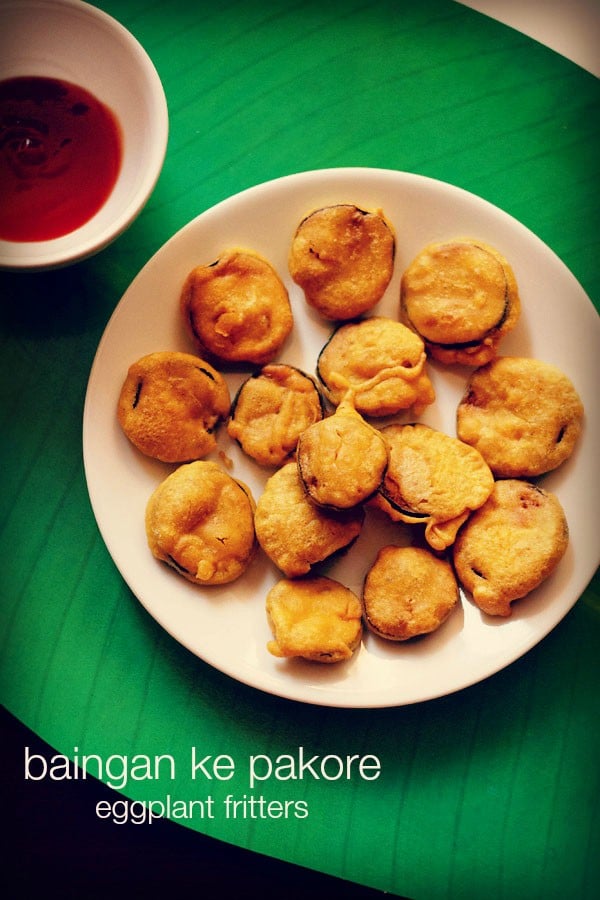
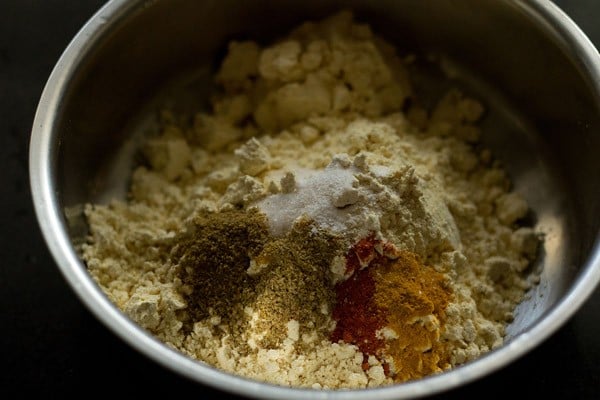
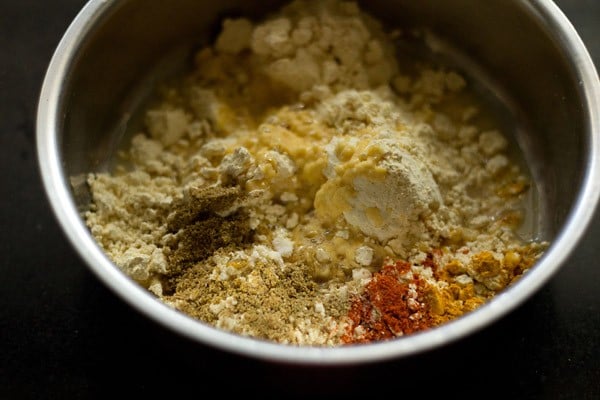
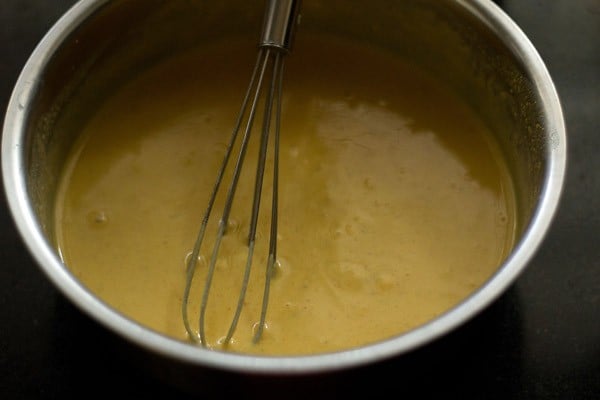

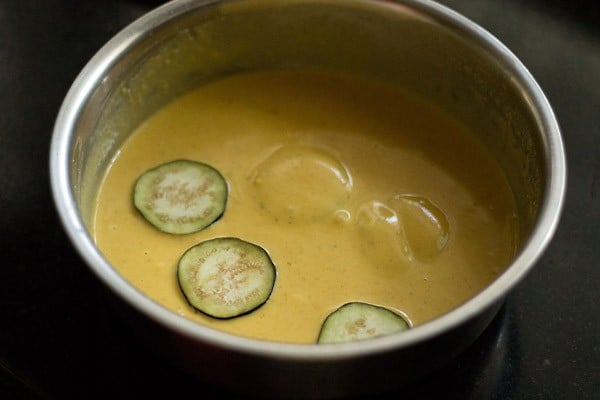
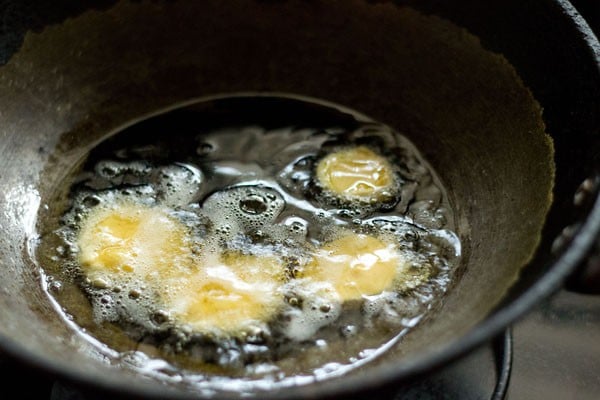
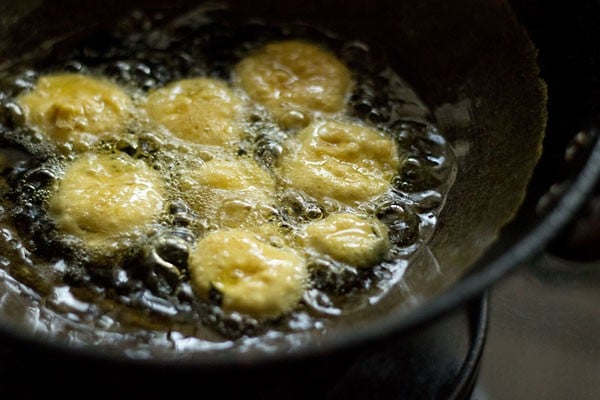
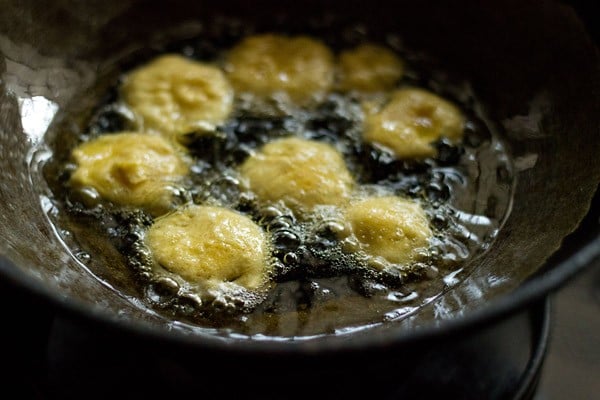
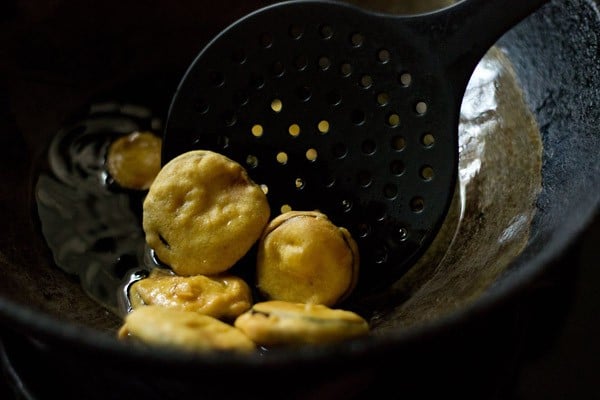
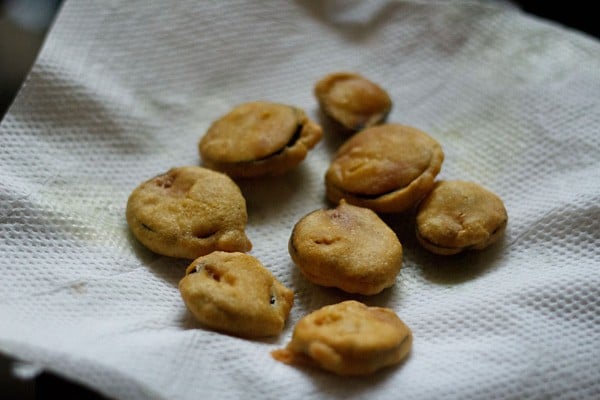
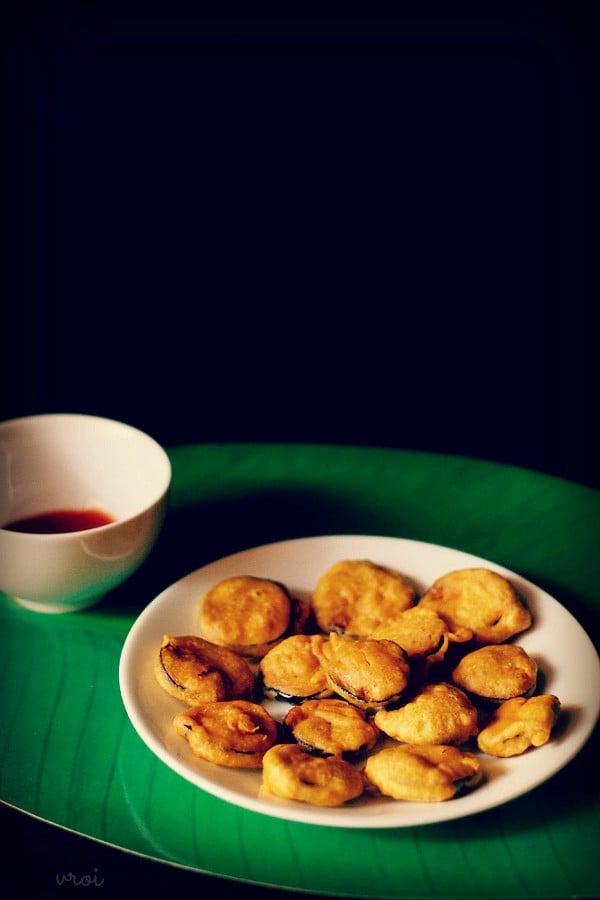

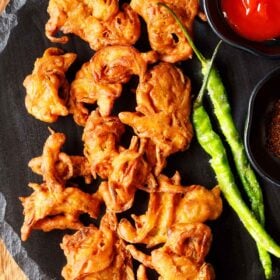
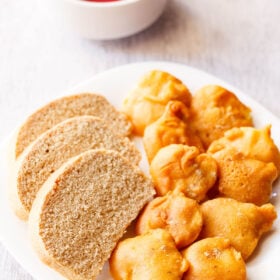
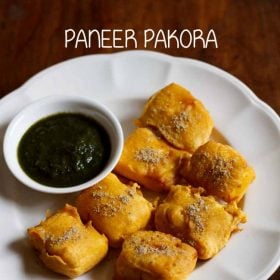
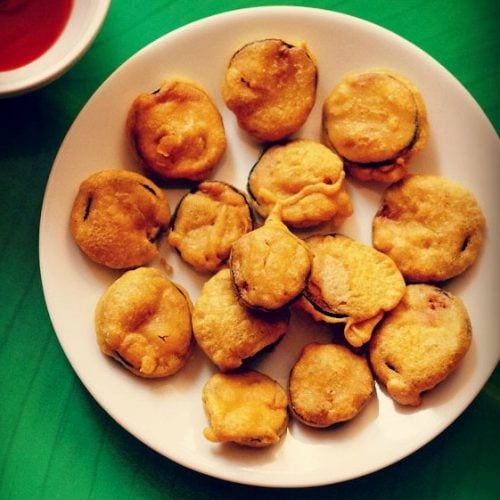
title: “Brinjal Pakora Brinjal Bajji " ShowToc: true date: “2024-10-01” author: “Marta Mabe”
About this recipe
Pakora are basically fritters made primarily with gram flour, spices and any vegetables. In Indian cuisine, you will find pakora made from a variety of vegetables like potato, spinach, onion, capsicum, spring onions, cauliflower, fenugreek leaves, etc. This is one such delicious variation of vegan fritters made with small eggplants. These brinjal pakora have a lovely soft, mildly sweet taste from the inside and the outside texture is crisp. I suggest using small to medium-sized variety of brinjal. If you use larger sized brinjal then chop them into bite-sized slices. There are occasions when I make pakora. For the last few days, we had sudden unseasonal rains and I did make pakora in the dull cold weather. Rains and pakora are a never-fail combination. Not to forget the masala chai that is served with the pakoda.
How to make Brinjal Pakora
Making batter
- In a mixing bowl take the dry ingredients – 1 cup besan (gram flour), ¼ tsp turmeric powder, ¼ tsp red chili powder, ½ tsp coriander powder, ½ tsp cumin powder, a generous pinch of asafoetida (hing) and salt as required. Also add 1 pinch of baking soda.
- Add ⅔ cup water or as required.
- Whisk to a smooth batter without lumps. Add water as required to make a medium consistency batter.
Slicing and batter coating
- Rinse and slice the brinjals (baingan) into thin slices. I used small brinjals. You can also use medium-sized eggplants. If using large eggplant, chop them into bite-sized slices.
- Dip the brinjal slices in the batter evenly.
Making brinjal pakora
- In a kadai or pan heat oil. When the oil becomes medium hot then gently place them in medium hot oil for frying. You can use sunflower oil or peanut oil or any neutral oil with a high smoking temperature.
- Turn over when one side is cooked partly.
- After a minute or so, flip again and fry them until crisp and evenly golden.
- With a slotted spoon remove the brinjal bajji and drain as much oil as possible.
- Place them on a paper kitchen towel to remove excess oil. Fry the brinjal pakora in batches this way.
- Serve the brinjal pakora hot or warm with any chutney of your liking. I also love to have a cup of hot ginger chai when I make veggie fritters.
Serving Suggestions
Serve the brinjal bajji hot or warm with mint coriander chutney or tamarind chutney or tomato ketchup. You can also have them with roti or bread. Sometimes I just use some leftover vegetables like brinjal, cauliflower, capsicum, spinach and make a pakora platter. Then I serve them with roti for lunch or dinner. You can also wrap them in a roti and add some green chutney and Guacamole and make a pakora wrap. This way also they taste equally delicious. You can even stuff them in bread slices to make sandwiches or as stuffing for burgers.
How to remove bitterness from eggplant?
Sometimes some eggplants can be bitter. So it is a good practice to soak the eggplant slices in salted water for 15 to 20 minutes before making any recipe. Then drain all the water, pat dry and use them in the recipe.
At what temperature to fry pakora?
When frying pakora, the oil has to be moderately hot – the temperature being 180 degrees to 190 degrees Celsius (360 degrees to 375 degrees Fahrenheit). You can either use a candy or deep fry thermometer to check the temperature of oil. Alternatively, add some droplets of the batter in the oil. If they rise to the surface gradually and start bubbling, the oil is ready. If they rise slowly or are submerged inside, the oil is not hot enough. If they rise too quickly and rapidly, the oil is very hot.
Why pakora are soggy and oily?
Frying at the right temperature and hotness of oil will ensure that you do not end up with soggy pakora or burnt pakora. If the oil is not hot, the batter will absorb more oil and the pakoda will become soggy. A thin batter will also make the pakora absorb plenty of oil. If the oil is very hot, the pakora will become more browned or can get burnt leaving the insides undercooked. Please be sure to rate the recipe in the recipe card or leave a comment below if you have made it. For more vegetarian inspirations, Sign Up for my emails or follow me on Instagram, Youtube, Facebook, Pinterest or Twitter. Bread Pakora (2 Ways) | Stuffed & Plain Bread Pakoda Onion Pakoda Recipe | Onion Pakora Aloo Pakora (Indian Potato Fritters) Paneer Pakora Recipe (Paneer Pakoda) This recipe post from the archives (March 2015) has been republished and updated on 19 December 2020.
















